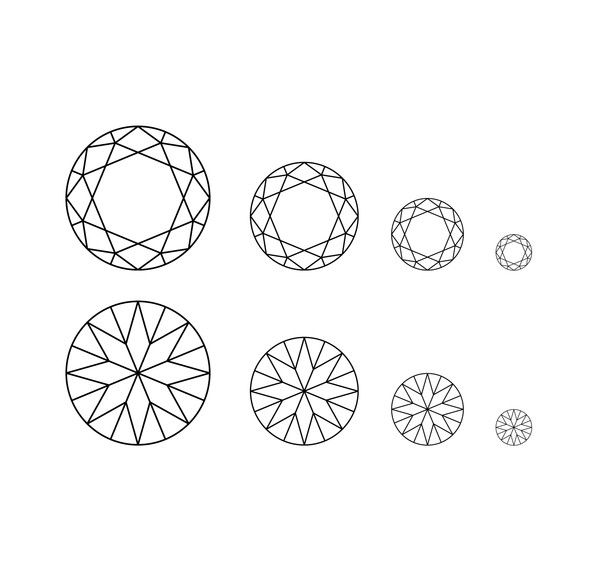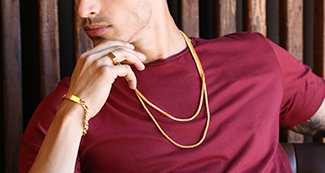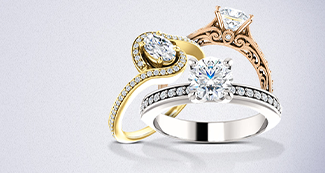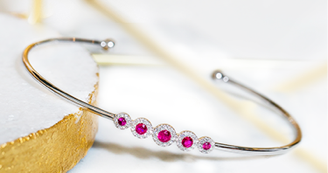“Diamond” comes from the ancient Greek word, ἀδάμας – adámas "unbreakable". Diamonds are formed deep inside the earth’s mantle under extreme pressure and high temperatures, then brought to surface through volcanic eruptions.
The beauty of a diamond is that it is made of carbon, the same material as all life forms, but due to extreme pressure it transformed to the hardest substance on earth, and it just so happens to be one of the most beautiful as well.

Cut: Revealing a stone’s beauty
The beauty of a diamond depends more on cut than any other factor and refers to proportions, symmetry and polish.
A professional takes a rough and dull diamond stone and reveals its diamond-like appearance to showcase “brilliance”, “fire” and “scintillation”. A diamond’s beauty is exciting, isn’t it?
Here is the catch: a cutter has to balance the optimal cut, that is the diamond’s appearance against maximum yield, that is, its carat weight from the rough stone.
Since most people pay more for a larger, "fair-cut" cut diamond than for a slightly smaller, well-cut diamond, the cutter is pressured to sacrifice appearance for weight.
Therefore, Cut grade is important. It allows you to identify those stones that were cut Fair to Poor in an effort to gain carat weight.

Carat: even a diamond is measured by weight
“Carat" written as “ct" comes from the "carob" seed, the original unit of measure for diamond traders. A carat is equal to exactly 0.2 grams (about the weight of a paper clip). Carat weight is unrelated to the similar sounding karat, which refers to gold's purity.
Two diamonds of equal carat weight can have very different costs based on other factors (such as cut, color, and clarity).
Two diamonds of equal carat weight may also appear very different in size based on the shape of the diamond. For instance, a 1 carat marquise tends to appear larger than a 1 carat round.

Clarity: The personality of the stone
All diamonds contain “birthmarks” which are either small imperfections inside the diamond (called inclusions), or on its surface (called blemishes). By cutting around an inclusion, a cutter allows the path of light to flow through the diamond, making it more brilliant. The preferred position for inclusions is under the bezel facets or near the girdle because they are harder to see there.

Color: A personal choice
Diamonds come in a variety of colors and some of them are highly prized like pink, blue, even yellow. However, the technical relationship between a diamond’s value and its color is based upon the fact that the less body color in a white diamond, the more true color it will reflect.
Color becomes much harder to detect once a stone is set in a ring and placed in an environment that contains color (as opposed to the all white background used in diamond color grading).
Color becomes more important as carat weight increases, because color is easier to perceive in a larger diamond, just as a carafe of white wine shows more color than a single glass.
Our Virani experts advise to go for lower clarity, higher color. VS2 diamond in F-G colour.








 Contact Us
Contact Us